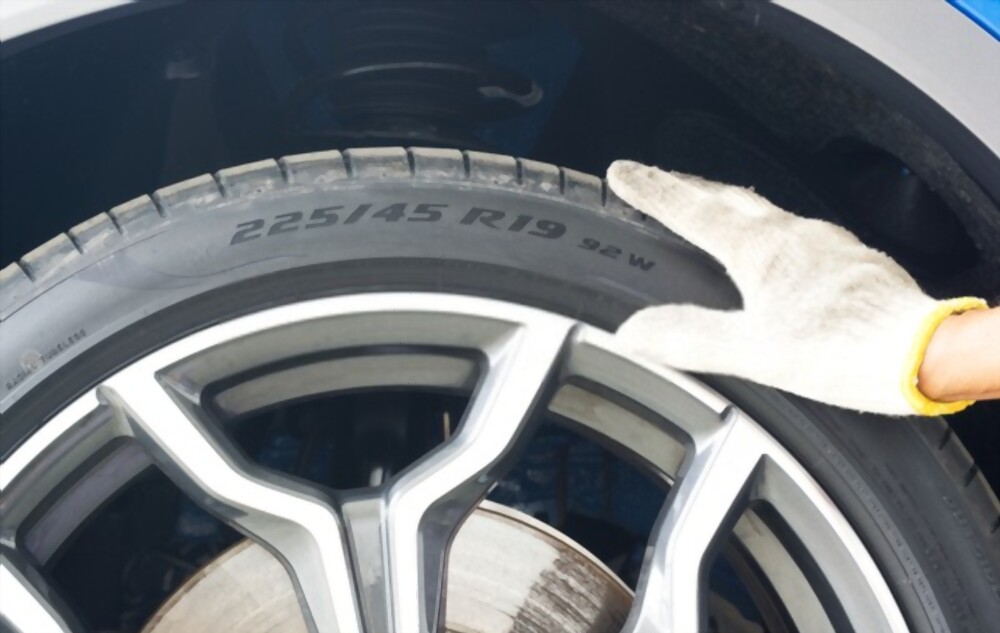What is a Tire Load Rating?
A tire load rating, also known as the load index, is a numerical value assigned to a tire that indicates the maximum weight it can safely support when properly inflated. This value is an essential factor to consider when selecting new tires for your vehicle, as it directly impacts the vehicle’s overall performance, stability, and safety.
Why Tire Load Ratings are Important
Choosing the correct tire load rating for your vehicle is crucial to ensure it can safely carry the weight of the vehicle, passengers, and cargo. Using tires with an inappropriate load rating can lead to premature tire wear, poor handling, and even tire failure, which can create unsafe driving conditions. Understanding tire load ratings and how to choose the right one for your vehicle is a vital aspect of tire selection and maintenance.
Types of Tire Load Ratings
Standard Load (SL)
Standard Load (SL) tires are designed for most passenger vehicles, including sedans, coupes, and small SUVs. These tires typically have a lower load rating compared to other tire types, as they are intended for vehicles with moderate weight and cargo capacity.
Extra Load (XL)
Extra Load (XL) tires, also known as reinforced or RF tires, are designed for vehicles with a higher weight and cargo capacity. These tires feature a more robust construction and have a higher load rating compared to standard load tires. XL tires are suitable for larger sedans, SUVs, and some light trucks.
Light Truck (LT)
Light Truck (LT) tires are specifically designed for trucks, vans, and SUVs that require a higher load-carrying capacity. These tires have a higher load rating than both SL and XL tires and are built to withstand the demands of heavier vehicles and loads. LT tires are commonly used on pickup trucks, larger SUVs, and commercial vehicles.
How to Determine Your Vehicle’s Required Load Rating
Locating the Tire Information Placard
One of the easiest ways to determine the required load rating for your vehicle is by locating the tire information placard. This placard can usually be found on the driver’s side door jamb, inside the fuel filler door, or in the glove compartment. The placard will provide information about the recommended tire size, load rating, and inflation pressure for your vehicle.
Checking Your Owner’s Manual
If you cannot locate the tire information placard or need more detailed information, consult your vehicle’s owner’s manual. The owner’s manual will provide the necessary information about the recommended tire size, load rating, and inflation pressure specific to your vehicle’s make and model.
Interpreting the Tire Load Index
The tire load index is a numerical value that corresponds to the maximum weight a tire can support. This number can typically be found on the sidewall of the tire, following the tire size information. For example, a tire marked as “225/45R17 91W” has a load index of 91, which corresponds to a maximum load capacity of 1,356 lbs (615 kg) per tire. A comprehensive load index chart can be found online or in your owner’s manual to help you interpret this number.
Factors to Consider When Choosing a Tire Load Rating
Vehicle Weight and Load Capacity
When selecting a tire load rating, consider your vehicle’s weight and maximum load capacity. This information can usually be found in the owner’s manual or on the tire information placard. Be sure to choose a tire load rating that meets or exceeds your vehicle’s requirements to ensure optimal performance and safety.
Driving Conditions and Terrain
The driving conditions and terrain you frequently encounter should also play a role in your tire load rating decision. For example, if you regularly drive on rough or uneven terrain, a higher load rating may be necessary to ensure tire durability and stability. Similarly, if you live in an area with extreme weather conditions or frequently encounter heavy traffic, a higher load rating may provide better performance and safety.
Towing and Hauling Needs
If you use your vehicle for towing or hauling heavy loads, it’s crucial to select a tire load rating that can accommodate the additional weight. Light Truck (LT) tires are typically the best choice for these situations, as they are designed for vehicles with higher load-carrying capacities. Always consult your owner’s manual or a professional tire dealer for guidance on the appropriate tire load rating for your towing and hauling needs.
Performance Expectations
Your performance expectations can also influence the tire load rating you choose. If you prioritize handling, cornering, or high-speed capabilities, a higher load rating may provide the desired performance. Keep in mind that higher load ratings may also result in a stiffer ride, so consider your preferences for ride comfort when making your decision.
Load Rating and Tire Inflation: The Connection
The Importance of Proper Tire Inflation
Maintaining the correct tire inflation is essential for the performance, safety, and longevity of your tires. Properly inflated tires can support the maximum load capacity specified by the load rating, ensuring optimal handling, stability, and tire wear.
How Inflation Affects Load Carrying Capacity
Underinflated tires can reduce the tire’s load-carrying capacity, leading to poor handling, increased tire wear, and potential tire failure. Overinflated tires, on the other hand, can cause uneven tire wear and a harsher ride. Regularly checking and maintaining the recommended tire inflation pressure can help you get the most out of your chosen tire load rating.
Tire Load Ratings and Speed Ratings: What You Need to Know
Understanding Speed Ratings
Tire speed ratings indicate the maximum speed at which a tire can safely perform when properly inflated and carrying the specified load. Speed ratings are represented by a letter, such as “H” (130 mph) or “W” (168 mph), and can usually be found on the tire’s sidewall.
Balancing Load and Speed Requirements
When choosing a tire load rating, it’s essential to consider the tire’s speed rating as well. A higher load rating may sometimes result in a lower speed rating, which could impact your vehicle’s performance. Be sure to select a tire that balances both load and speed requirements according to your driving habits and vehicle specifications.
Tire Load Ratings and Vehicle Safety
How Load Ratings Impact Handling and Stability
Tire load ratings play a significant role in your vehicle’s handling and stability. Tires with an appropriate load rating for your vehicle can support the weight of the vehicle, passengers, and cargo, ensuring optimal performance and safety. Using tires with an incorrect load rating can result in poor handling, decreased stability, and an increased risk of tire failure.
Tire Overloading and its Consequences
Overloading your tires by exceeding their maximum load capacity can have severe consequences, including premature tire wear, poor handling, and tire failure. Tire failure due to overloading can result in a sudden loss of control, leading to dangerous driving situations or accidents. Always adhere to your vehicle’s recommended load rating and avoid overloading your tires to maintain safety on the road.
Top Tire Brands for Different Load Ratings
When selecting a tire with the appropriate load rating, it’s essential to choose a reliable and reputable brand. Some of the top tire brands offering tires in various load ratings include:
Consult a professional tire dealer to help you choose the best tire brand and model for your vehicle’s specific load rating requirements. These manufacturers offer a wide range of options to cater to different performance expectations, driving conditions, and budgets.
Frequently Asked Questions about Tire Load Ratings
Can I use a higher load rating than recommended for my vehicle?
Using a tire with a higher load rating than recommended for your vehicle is generally considered safe, as long as the tire’s size, speed rating, and other specifications are compatible with your vehicle. However, it’s essential to consult your owner’s manual or a professional tire dealer to ensure the chosen tire will not negatively impact your vehicle’s performance, handling, or ride comfort.
Is it safe to use a lower load rating than recommended?
Using a tire with a lower load rating than recommended for your vehicle is not recommended, as it can compromise your vehicle’s handling, stability, and safety. Underinflated tires or tires with an insufficient load rating can result in poor performance, increased tire wear, and potential tire failure.
How do tire load ratings affect fuel efficiency?
Tire load ratings can impact fuel efficiency due to their effect on rolling resistance. Tires with higher load ratings generally have a stiffer construction, which can result in increased rolling resistance and reduced fuel efficiency. However, this difference is typically minimal and may not significantly impact your vehicle’s overall fuel consumption.
Conclusion: Choosing the Right Tire Load Rating for Your Vehicle
Selecting the right tire load rating for your vehicle is crucial for ensuring optimal performance, stability, and safety. By considering your vehicle’s weight and load capacity, driving conditions, towing and hauling needs, and performance expectations, you can choose the appropriate tire load rating to meet your requirements. Be sure to consult your owner’s manual, the tire information placard, or a professional tire dealer for guidance on the best tire load rating for your specific vehicle. By selecting the right tire load rating and maintaining proper tire inflation, you can enjoy a safe and comfortable driving experience.


